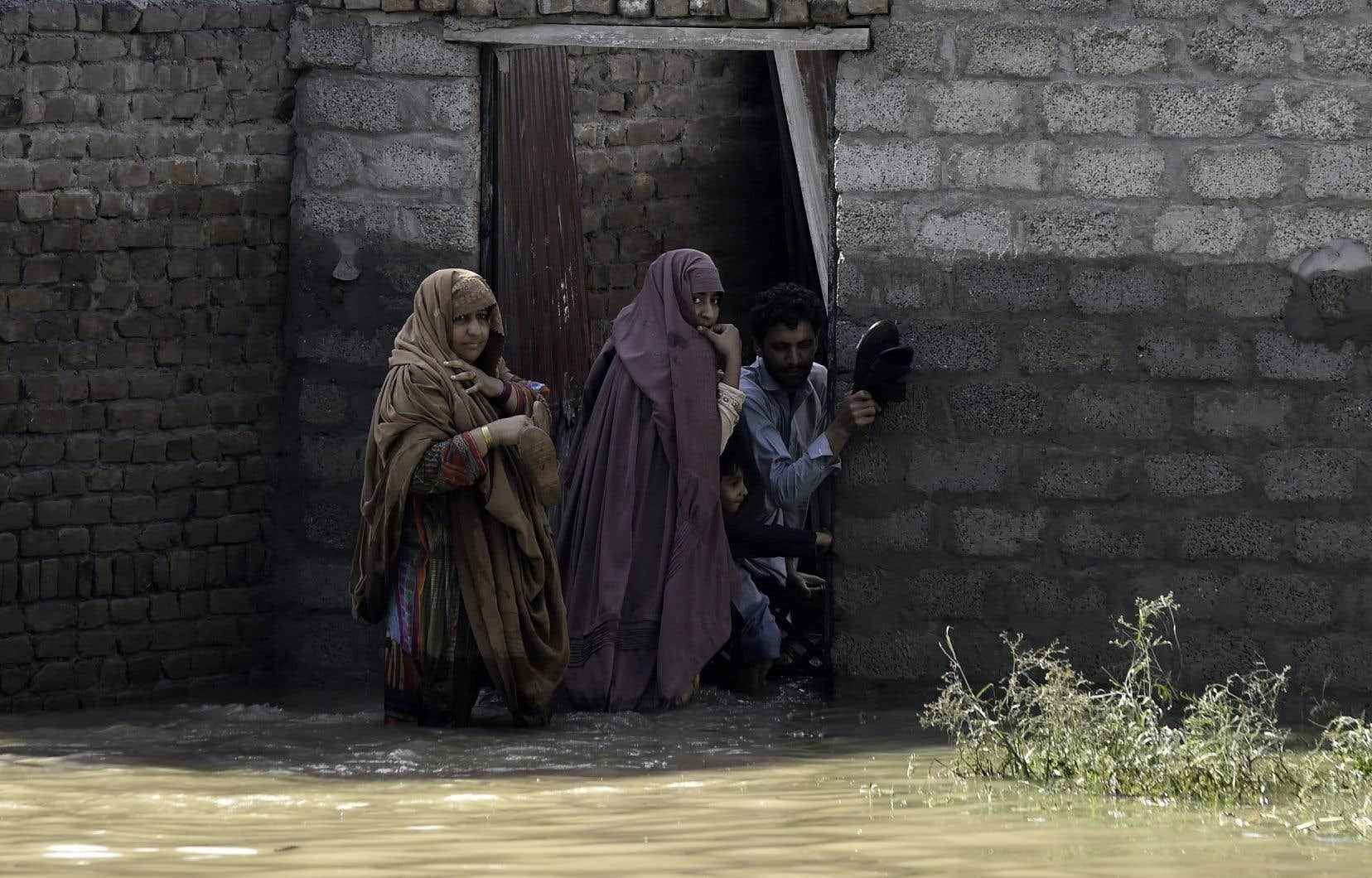Tens of millions of Pakistanis were battling the worst monsoon rains “in 30 years” on Monday, which killed at least 1,061 people, swept away countless homes and destroyed vital farmland.
The monsoon rains that began in June are “unprecedented for 30 years”, Prime Minister Shehbaz Sharif said on Monday as he traveled through hard-hit areas in the north to lead relief operations.
“The floods are like an ocean, there is water everywhere,” he added.
A huge relief operation was underway in the country, where international aid was slowly starting to arrive, as the Indus, the country’s main river, threatened to burst its banks.
More than 33 million people, or one in seven Pakistanis, have been affected by the floods and nearly a million homes have been destroyed or severely damaged, according to the government.
At least 1,061 people have been killed since the start of the monsoon in June, with 28 dead in the past 24 hours, according to the latest report from the National Disaster Management Authority (NDMA) on Monday.
But the authorities were still trying to reach isolated villages located in mountainous areas in the north of the country, which could further increase the toll.
“We are witnessing an ocean of water that is submerging entire neighborhoods,” said Climate Change Minister Sherry Rehman, who a few days earlier had called the event “monsoon monsoon of the decade”. “The effects of climate change are on our doorstep,” she added.
The monsoon, which usually lasts from June to September, brings its share of drama and destruction each year.
These storms are comparable to those of 2010, the year in which 2,000 people were killed and nearly a fifth of the country submerged by monsoon rains.
Pakistani officials attribute the devastating weather to climate change, saying Pakistan is suffering the consequences of irresponsible environmental practices elsewhere in the world.
The country received twice as much rainfall as usual, according to the weather service. In the most affected southern provinces (Baluchistan and Sindh), rains were more than four times the average for the past 30 years. The small town of Padidan has recorded a record with more than four feet of rain falling since June.
Near Sukkur in Sindh province, where a massive colonial-era dam on the Indus River is vital to preventing the disaster from getting worse, a farmer lamented seeing his rice fields lost.
“Our plantations extended over 2,000 hectares, on which the best quality rice was sown and eaten by you and us,” Khalil Ahmed, 70, told AFP. “It’s all over.”
The head of the dam assured that the water flowing from the north of the country should reach the structure around September 5.
Hard to land
The NDMA said more than 80,000 hectares of farmland had been devastated, and more than 3,400 kilometers of roads and 157 bridges washed away.
The Indus now threatens to burst its banks, fed by the waters of dozens of rivers and mountain streams in the North, in spate due to record rains and melting glaciers.
Most of Sindh is now under water, hampering relief operations under the supervision of the Pakistani army.
“There are no landing or approach areas available […] It is difficult for our pilots to land,” a military official told AFP, on condition of anonymity.
Army helicopters also have difficulty coming to the aid of people in danger in the north of the country, where the terrain, made up of high mountains and deep valleys, makes flying conditions extremely risky.
The government declared a state of emergency and appealed to the international community for help.
On Sunday, the first flights bringing humanitarian aid arrived, from Turkey or the United Arab Emirates.
These floods come at the worst time for Pakistan, whose economy is collapsing and which has been in deep political crisis since the ousting of Prime Minister Imran Khan in April following a vote of no confidence in the National Assembly .
The International Monetary Fund was due to meet in Washington on Monday to agree to the resumption of a critical $6 billion lending program for the country, but it’s already clear Pakistan will need more to rebuild infrastructure. destroyed by floods.
The price of staple foods is skyrocketing and supply problems are already being felt in the provinces of Sindh and Punjab.
